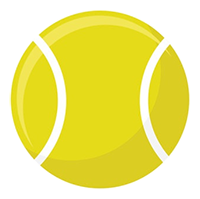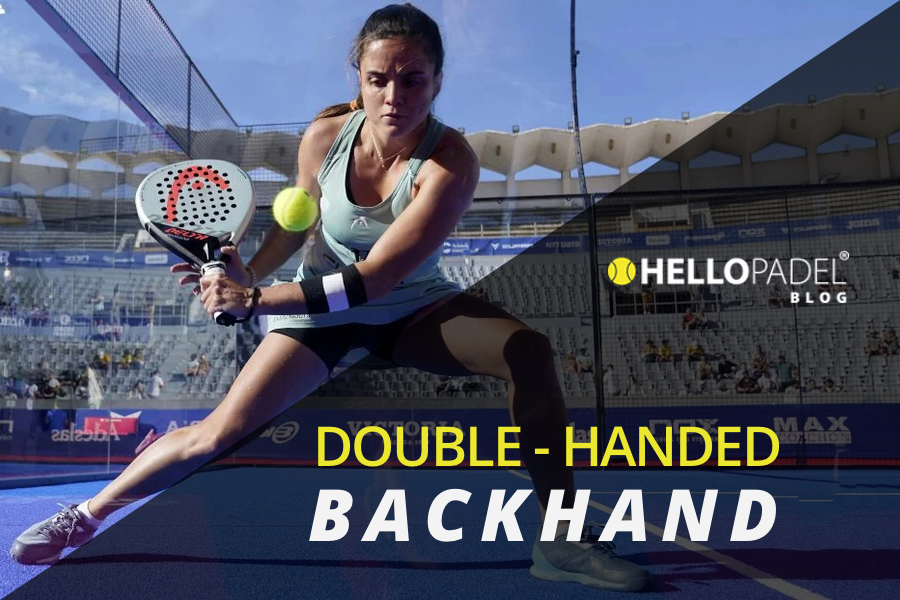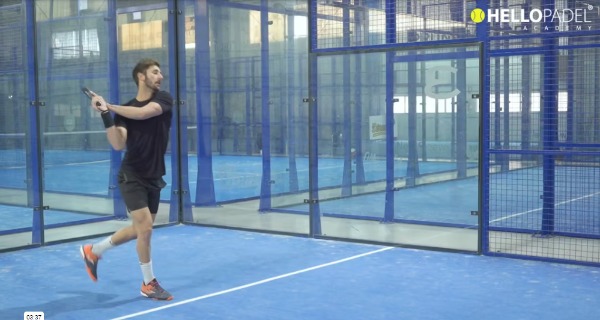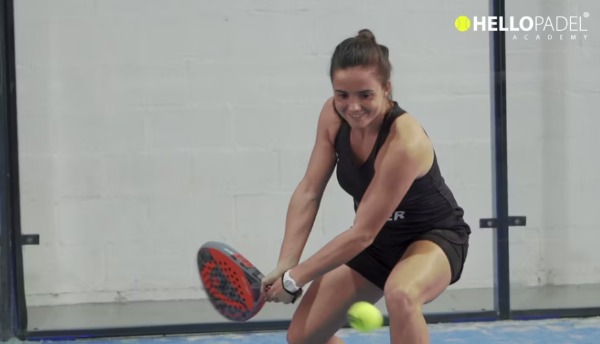INTRODUCTION
According to a tennis article of this year, only 13 of the top 100 players in the world play with a one-handed backhand, meaning that 87% of players play the double-handed backhand. Who doesn’t know Rafa Nadal’s or Novak Djokovic’s two-handed backhand?
But what about in the world of padel? How many players do you know who play the two-handed backhand? Or even more, is there any player who always plays the two-handed backhand?
THE DOUBLE-HANDED BACKHAND GRIP
Although there can be significant differences in the way the different players who play the two-handed backhand can grip the racket, as a general rule we can say that the grip used to play the two-handed backhand is what is known in tennis as the “false two-handed backhand grip”.
You perform the grip as follows:
– Dominant hand: you will normally use the continental grip, although it can vary to the Australian or even as far as the East forehand.
– Non-dominant hand: very similar to an East forehand for left-handers. This will be the hand that pushes and gives direction to the ball.
ADVANTAGES OF THE DOUBLE-HANDED BACKHAND
- It makes it easier to hit high balls. With the one-handed backhand, we are almost forced to slice the balls that come high.
- Better predisposition to return balls that come hard and fast, since, by holding the racket with both hands, we will have more firmness and security, achieving a more stable and controlled impact.
- It is easier to make an angled shot, as both wrists are flexed.
- It allows the execution of delayed strokes, especially when the ball is coming at us, as the point of impact is a little further back than with a one-handed backhand.
- Greater leverage and power to hit the ball.
- In some people, easier to execute, especially if you already executed it in tennis.
- It is probably more effective for returning serve or for returning balls that bounce off the side wall.
- Greater control and precision of the ball, as holding the racket with both hands makes it more difficult to move the wrist when hitting.
- You can hide the shot better. It will be more difficult for the opponent to guess where we are going to throw the ball.
- Ailments due to epicondylitis or tennis elbow occur less frequently.
DISADVANTAGES OF THE TWO-HANDED BACKHAND
- It is more difficult to return balls that come low or very low.
- We must be closer to the ball to be able to hit it, as our reach is shorter. This will require greater leg mobility and footwork, so returning forced balls will be more demanding.
- The handle of the vast majority of padel rackets are not usually long enough to be able to put both hands together comfortably. Many players roll the overgrip over the end of the handle of the racket to gain a few more centimetres of grip.
- It is very difficult to give at slice effect.
- It is much more difficult to make a good off the back wall with a two-handed backhand.
- It requires a lot of torsion and rotation of the upper torso.
CONCLUSION
Although it is true that there are very few men (Pablo Lima, Mike Yanguas, José Carlos Gaspar, Franck Binisti…) who use the two-handed backhand, even if only occasionally, there are more and more women on the professional circuit (Marta Marrero, Victoria Iglesias, Maricarmen Villalba…) who use the two-handed backhand. In addition, we must not lose sight of the fact that padel is a relatively new sport and that it is still evolving, it is not the same today as it was 10 or 15 years ago. Therefore, it would not be strange to see more and more players using the two-handed backhand in some very specific situations of the game as another resource.
The two-handed backhand, although it is clear that it is not the most common choice, it is not a stroke that we have to prohibit or exterminate at all costs.
Most of the best coaches agree that this shot can be a good option, as long as you know how to execute it well, in some cases and/or very specific game situations.
So, for example, if a player comes from tennis and he/she used to play a two-handed backhand, keeping this backhand, at least in some specific situations of the game and after polishing some details to be able to apply it better to padel, he/she will be able to take advantage of it and make the most of his/her game.
Another case in which it might also be appropriate to incorporate the two-handed backhand would be when a player, for whatever reason, feels more comfortable, confident and more effective with it than with a one-handed backhand.
Regarding children, there is less agreement here. Some coaches believe that children should hold the racket with two hands because they are not strong enough, while others argue that, if they gave a kid a children’s racket and played on a smaller court according to their size, they would have no problem learning the one-handed backhand.
So, in conclusion, we could say that, at least at present, the vast majority of coaches believe that it is better to try to opt for and train the one-handed backhand and, only occasionally and with some people, to use the two-handed backhand.
In any case, the choice to incorporate the two-handed backhand should be made by the player together with the advice of his coach (who is the expert in teaching padel for a reason), and always after knowing very well the advantages and disadvantages of each one and having tested and evaluated the effectiveness of both.
 Upgrade now
Upgrade now







